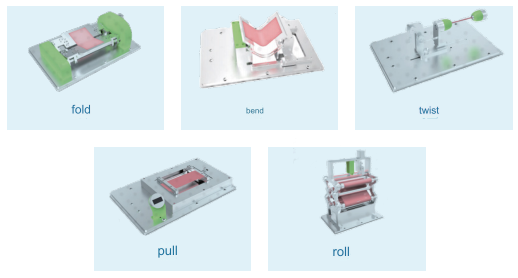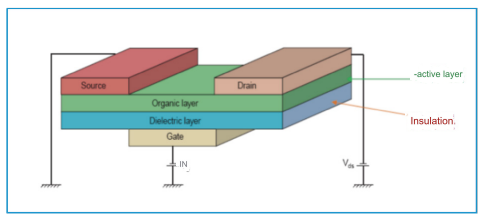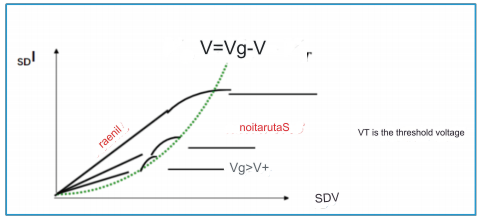

Precise high-precision digital source measure meter (SMU) builds a test system for flexible material and device
Simplify the test process and make the material test standardized solution enquiry
Position:Home > Solutions > Material research
Overview: Flexible Electronic Materials and Their Applications
Flexible electronics is a technology that attaches inorganic/organic devices to flexible substrates to form circuits. Compared with traditional silicon electronics, flexible electronics refers to thin-film electronic devices that can be bent, folded, twisted, stretched, and even deformed into arbitrary shapes while still maintaining high-efficiency optoelectronic performance, reliability, and integration.
Flexible electronics covers organic electronics, plastic electronics, bioelectronics, nanoelectronics, printed electronics, etc., including: RFID, flexible display, organic electroluminescent (OLED) display and lighting, chemical and biological sensors, flexible photovoltaics, flexible logic and storage, Flexible batteries, wearable devices and many other applications.

"Dynamic" testing of flexible electronic materials
Flexible electronic materials will be repeatedly bent and twisted during use, and the stress state and microstructure on the surface and inside of the material will gradually change during this process, which will affect the electrical properties and life of the material. Using repeated bending and twisting methods to test the fatigue resistance, stability and life decay characteristics of flexible materials has gradually become an indispensable means of characterization of flexible electronic devices.
Difficulties in "dynamic" testing of flexible electronic materials
In order to ensure the normal use of flexible electronics, a detailed understanding of the electrical properties of flexible materials is necessary when flexible materials are used in circuits. Because the impedance of the flexible material will change after deformation, and the degree of deformation is different, and the change of impedance is also different. It is necessary to carry out l-V characteristic test and monitor the change curves of V-t, l-t and R-t in real time, and special attention should be paid to the synchronization between the flexible material folding device and I-V test equipment during the test. Traditionally, the electrical characteristics of flexible electronic materials are measured manually, which requires a voltage source, ammeter, and manual calculation of the change in resistance value. However, a power supply or a multimeter can only be used as a source or a meter, and they can be used together to complete l-V measurement, which cannot meet the test scenario of one machine with multiple uses, and cannot guarantee the scene of high measurement accuracy and synchronization with the folding device.
precise flexible test system: create a standardized and efficient "dynamic" test solution
The flexible electronic material testing system jointly created by precise instrument and well-known manufacturers in the industry can simulate 5 basic test actions such as twisting, turning, bending, folding, and rolling by combining test fixtures with different actions, and 11 basic simulation test actions. The machine is multi-purpose, so that the flexibility test can be standardized. Not only can it test the five basic actions of flexible materials such as bending, bending, twisting, pulling, and rolling, but it can also test the I-V characteristics of flexible materials. cost.

Flexible Test System Fixtures
Precise has been deeply involved in the field of semiconductor I-V testing, and has been committed to independent research and development of domestic source measure meter products, and took the lead in launching the S series high-precision digital source measure meter, which integrates the input, output and measurement functions of voltage and current, and can also be used as an electronic load to absorb energy. The maximum voltage is 300v, the minimum current is 100pA, the output accuracy reaches 0.1%, and the maximum power is 30W, which realizes fast and accurate measurement of electrical parameters of materials, and is widely used in printed electrodes, conductive polymers, graphene, sensors, flexible solar cells, OLEDs And the l-V characteristic test scene of flexible electronic materials such as electronic skin.
"Static" testing of flexible electronic materials
Flexible electronic devices are based on flexible electronic materials, combined with micro-nano processing and integration technology, to manufacture a new generation of flexible electronic components that can realize functions such as logic amplification, filtering, data storage, and sensing. Flexible semiconductor devices can be divided into three categories: inorganic semiconductor devices, carbon-based semiconductor devices, and flexible organic field-effect transistors (OFETs). Among them, organic field-effect transistors have received great attention from researchers because of the following outstanding features: material sources Wide, compatible with flexible substrates, low-temperature processing, suitable for mass production and low cost, etc., can be used for memory components, sensors, organic lasers, superconducting materials, etc.
An organic field-effect transistor (OFET) is an active device that regulates the conductivity of an organic semiconductor layer through an electric field. It consists of three electrodes, namely source, drain, gate, organic semiconductor layer and gate. The typical structure is the top contact type and the bottom contact type, and of course there are atypical structures such as double active layer type or double insulating layer type. The test of organic field effect transistor (OFET) mainly includes l-V test and C-V test.

Organic Field Effect Transistor (OFET) Structure

Organic Field Effect Transistor (OFET) I-V Curve
I-V test
I-V test is one of the main methods used to extract the key parameters of the device, study the effect of the manufacturing process, and determine the quality of the contact. Including input/output characteristic test, threshold voltage test, breakdown test and leakage current test, etc.
Precise S or P series high-precision digital source measure meter integrates the functions of input, output and measurement of voltage and current, and can also be used as an electronic load to absorb energy. The maximum voltage is 300v, the minimum current is 10pA, the output accuracy reaches 0.1%, and the maximum power is 30W, which realizes fast and accurate measurement of electrical parameters of materials, and is widely used in printed electrodes, conductive polymers, graphene, sensors, flexible solar cells, OLEDs And the I-V characteristic test scene of flexible electronic materials such as electronic skin.
I/O characteristic test
OFET is a device that uses the gate voltage to control the source-drain current. Under a certain fixed drain-source voltage, an IDs~VGs relationship curve can be measured, and a group of DC input characteristic curves can be measured corresponding to a set of stepped drain-source voltages. The relationship between IDs~VDs obtained by OFET under a fixed gate-source voltage is the DC output characteristic, and a group of output characteristic curves can be measured corresponding to a set of stepped gate-source voltages.
Threshold voltage VGs(th)
VGs(th) refers to the VGs value at which the gate-source voltage can make the drain start to have current;
Leakage current test
lGss (gate-source leakage current) refers to the leakage current flowing through the gate under a specific gate-source voltage; lDss (zero gate voltage drain current) refers to the DS between VGs=0 and under the specified Vos inter-leakage current;
Pressure test
VDss (drain-source breakdown voltage): refers to the Vos value when lo starts to increase sharply during the process of increasing the drain-source voltage under the condition of VGs=0.
C-V test
C-V measurement is often used to monitor the manufacturing process of OFET. By measuring the C-V curve of OFET capacitance at high frequency and low frequency, the gate oxide layer thickness tox, oxide layer charge and interface state density Dit, flat band voltage Vfb, and silicon substrate can be obtained. Doping concentration and other parameters. It generally includes the tests of Ciss (input capacitance), Coss (output capacitance) and Crss (reverse transfer capacitance). The commonly used test method is to apply a DC bias voltage between the collector and the emitter under the condition of VGE=0, and at the same time use an AC signal (frequency is generally between 10KHz and 1MHz) to measure.
Flexible Thin Film Material Resistivity Test
Thin film is a two-dimensional material, and its size in the thickness direction is very small, often on the order of nanometers to microns. Electronic semiconductor functional devices and optical coatings are the main applications of thin film technology. Thin film materials can be divided into non-electronic thin film materials and electronic thin film materials, and electronic thin film materials can be divided into semiconductor thin films, dielectric thin films, resistive thin films, photoelectric thin films, etc. Surface resistivity is an important electrical parameter of electronic thin film materials.
The commonly used method for surface resistivity is the four-probe test method. Simply speaking, the four-probe test method is to place four probes equidistantly on the sample, the outer two probes provide current, and the inner two probes test the voltage, and then calculate the resistivity through the measured data; use a source measure unit Adding a probe station can complete the test manually or by writing software automatically.
Precise S/P series high-precision digital source measure meter integrates the functions of input, output and measurement of voltage and current. The maximum voltage is 300V, the minimum current is 10pA, and the output accuracy reaches 0.1%. It is equipped with a third-party probe station to meet the resistivity test requirements of different electronic thin film materials. At the same time, it provides an SPI programming instruction set, which is convenient for writing software for automatic testing.
Wuhan precise has been focusing on the development of electrical performance test instruments for semiconductors. Based on the core algorithm and system integration and other technical platform advantages, it has taken the lead in independently developing high-precision digital source measure meters, pulse source measure meters, narrow pulse source measure units, and integrated plug-in source measure meters. And other products, widely used in the field of analysis and testing of semiconductor device materials. For more flexible material and device test system construction plan and test line connection guide, welcome to inquire